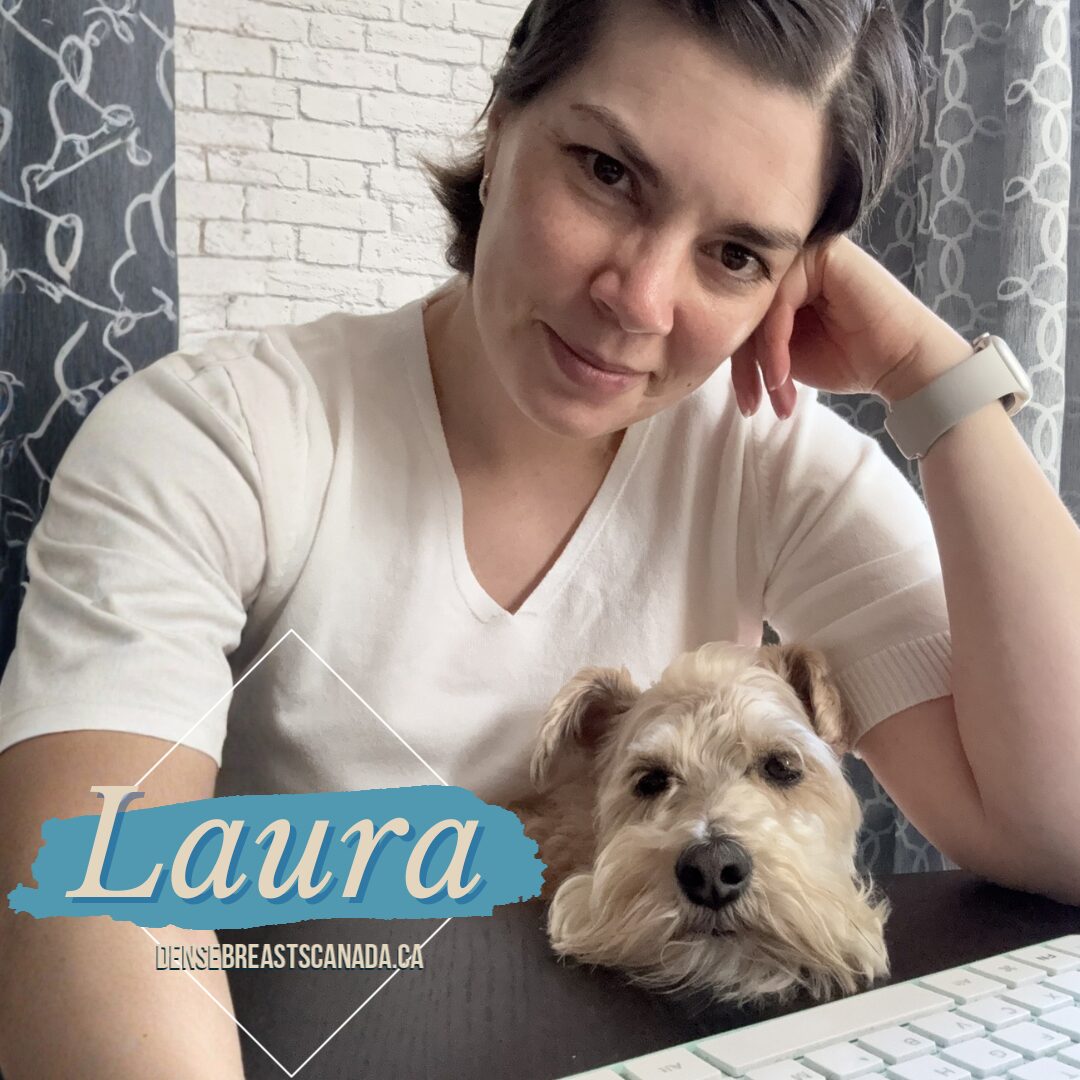Laura

Hello!
As I write this, just three sleeps away from the final step of my cancer treatment—having my chemo port removed—it still feels incredibly surreal. After everything I’ve been through, I find it hard to fully comprehend that I’ve spent the past year fighting breast cancer. It’s almost unbelievable, and even now, it feels like a dream I can’t quite wrap my head around.
In June 2024, at 40 years old, I made the decision to finally take charge of my health. Aside from some occasional allergies, I didn’t have any pressing concerns, but I figured it was time for a checkup—just to cover all the bases. I had heard that the recommended age for breast screening was being lowered from 50 to 40 that fall, so I asked my family doctor if I could go ahead and schedule my first mammogram early to establish a baseline. She was more than happy to send the referral, and just a few days later, I had an appointment lined up.
On August 7, 2024, I went in for my very first mammogram.
The next morning, I got a call—because I have dense breast tissue (category C), they needed a few additional images. I went back in a few days later, assuming it was routine. But then came another call: they’d found something suspicious and wanted to schedule a biopsy.
What was supposed to be a simple, first-time screening quickly turned into something I never expected—a nightmare unfolding in real time.
On September 3, 2024, I got the call: I had breast cancer.
I had no symptoms. No family history. Nothing that raised any red flags. But I still had cancer.
My initial diagnosis was DCIS—ductal carcinoma in situ—non-invasive and caught very early. Essentially, it was stage 0. In those early days, I kept thinking: “Oh my God… how much worse could this have been if I had waited another 10 years for my first mammogram?”
A few weeks later, I met with my surgeon, and from there, everything moved quickly. The plan was surgery, followed by radiation—with a good chance that everything would be wrapped up by Christmas. On October 3rd, I had a lumpectomy and sentinel node biopsy. The surgery itself went smoothly, but recovery wasn’t easy. Being stuck at home, unable to do much while waiting for the pathology results, was a huge mental challenge.
When the results finally came in, there was good news—and bad news.
The good news: clear margins and no sign of cancer in the lymph nodes. Huge relief.
The bad news: the pathology showed the cancer was more advanced than initially thought. My final diagnosis was Stage 1, Grade 3 invasive ductal carcinoma (IDC), along with DCIS. It was also hormone receptor negative—but HER2 positive.
I had never even heard of HER2+ before. I quickly learned it meant my cancer was more aggressive, and the original treatment plan had to change. Radiation was still part of the plan—but now, chemo had to come first.
On November 4, I started 12 weeks of weekly Taxol chemotherapy. At the same time, I began treatment with Herceptin—a targeted therapy for HER2+ breast cancer. That would continue every three weeks for nearly a full year.
Chemo was tough—but I made it through.
As soon as chemo ended, I transitioned to radiation. I completed 20 consecutive treatments (weekdays only), and with that, another major phase of treatment was complete.
In mid-March, radiation ended—but treatment wasn’t over. Even though the biggest hurdles—surgery, chemo, radiation—were behind me, I still had several months of Herceptin treatments to go. These infusions were less intense than chemo but still came with their own fatigue and side effects. Mentally, it was exhausting to still be in “treatment mode” after everything I’d already been through.
One of the biggest blessings throughout all of this has been my work.
My workplace has been nothing short of incredible—supportive, flexible, and understanding in every possible way. Aside from taking two weeks off to recover after surgery, I continued working full-time through treatment, only taking the occasional day off when I truly needed it. And never once was I made to feel guilty for prioritizing my health.
As strange as it might sound, continuing to work was one of the best decisions I made. It gave me structure, purpose, and a much-needed distraction from the constant mental toll of cancer. Having something else to focus on—something outside of appointments, test results, and side effects—helped keep me grounded. It reminded me that I was still me, not just a patient.
I know not everyone has the option or support to keep working during treatment, and I don’t take that for granted for a second. I’m endlessly grateful for the people I work with and the grace they showed me during the most difficult year of my life.
And now here I am—October 2025.
Just three sleeps away from my final step: getting my chemo port removed. It’s such a small thing, but it feels monumental. That little device was my lifeline through chemo—but it also represents everything I’ve fought through to get to this point.
It’s strange to think how far I’ve come. Even now, it feels surreal to say that I’ve spent the past year in cancer treatment. In some ways, it all moved so fast—and in others, it felt like time stood still. It’s hard to believe that a routine checkup turned into all of this. It still doesn’t quite feel real, but I’m incredibly grateful to be here now—almost at the finish line, and finally starting to look ahead.
